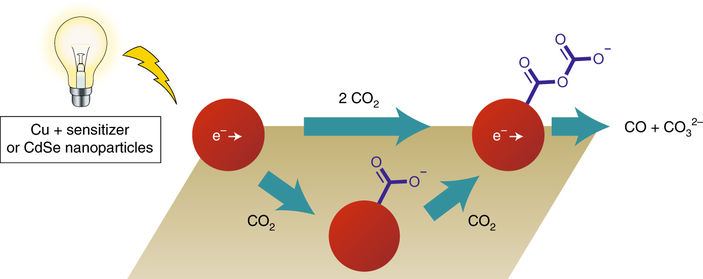Catalytic carbon dioxide (CO2) reduction is an important technology for the production of fuels and chemicals. Mechanistic studies have suggested that both electro- and photocatalytic approaches may share a common intermediate: a carbon dioxide radical anion (CO2–) bound to the catalyst’s surface.
Now, using rapid-scan Fourier-transformed infrared spectroscopy in combination with isotopic labelling, Heinz Frei, a senior scientist in Molecular Biophysics and Integrated Bioimaging (MBIB), and colleagues have identified a carbon dioxide dimer radical anion (C2O4–) as the crucial surface intermediate during the photocatalytic reduction of CO2 on copper nanoparticles.

Although recent electrochemical investigations have suggested the existence of this one-electron surface intermediate, this study, published in the Journal of the American Chemical Society (JACS), provides the first direct experimental evidence.
Read more in this Nature Catalysis research highlight.




